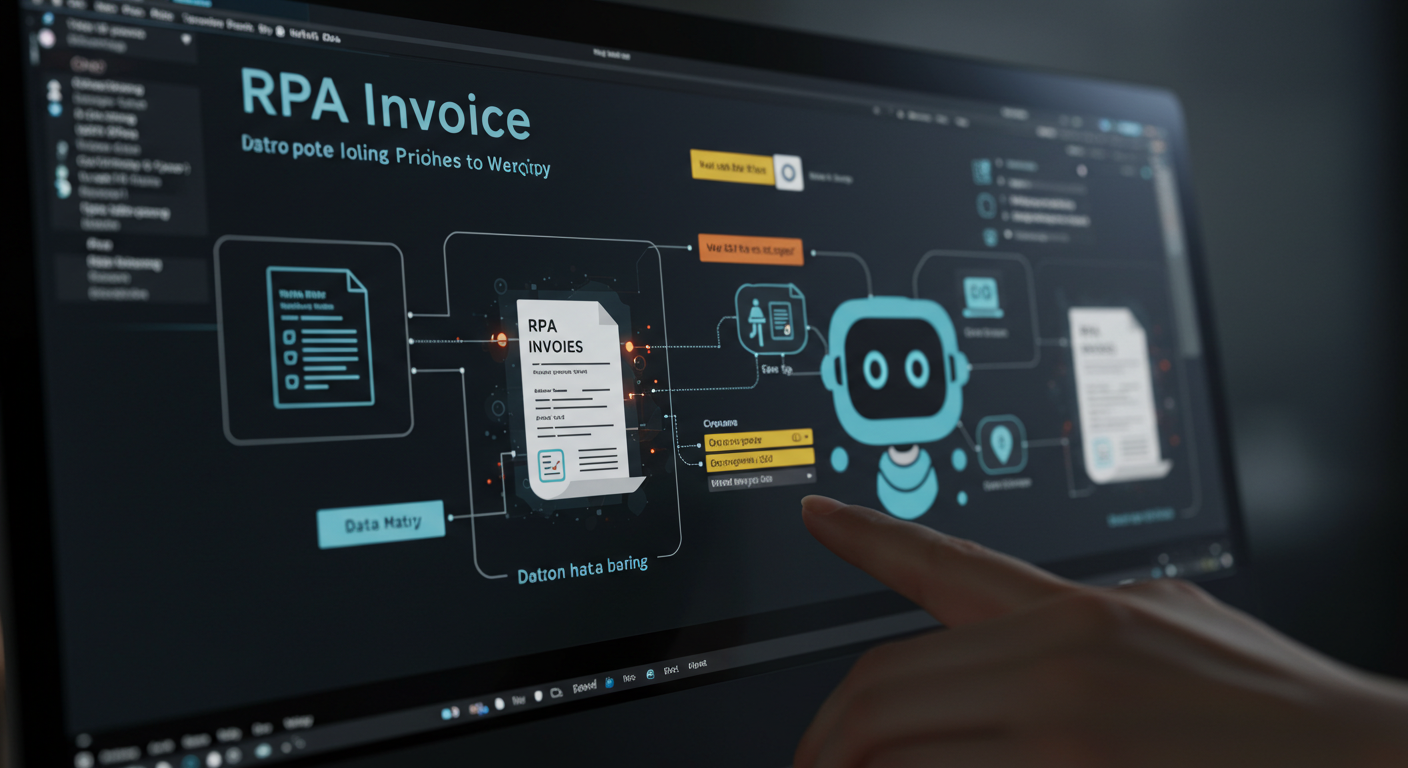A Beginner's Guide to RPA Bots: What You Need to Know
What is an RPA bot? This question has become increasingly relevant as businesses seek ways to optimize their operations and reduce manual workload. RPA bots represent a significant shift in how organizations approach routine tasks, offering solutions that work tirelessly behind the scenes.

Getting Started with RPA Bots: The Essentials
RPA bots are software programs designed to automate repetitive, rule-based tasks that humans typically perform. These digital workers operate entirely within computer systems, mimicking human actions such as clicking buttons, typing text, and transferring data between applications. Unlike physical robots seen in manufacturing facilities, RPA bots exist purely as software algorithms that work within existing business applications.
The primary purpose of these automated systems is to handle mundane, time-consuming tasks that follow predictable patterns. They excel at activities such as data entry, form filling, invoice processing, and report generation. By taking over these routine responsibilities, RPA bots free up human workers to focus on more strategic and creative work that requires critical thinking and problem-solving skills.
Modern businesses rely on RPA bots to streamline operations across various departments. Customer service teams use these bots to automatically process support tickets and route them to appropriate agents. Finance departments leverage them for accounts payable processes and transaction reconciliation. Human resources teams deploy bots to process employee onboarding documents and manage benefits enrollment.
The Development Process Behind RPA Automation
Creating effective RPA bot automation requires a systematic approach that begins with identifying suitable automation opportunities. Business analysts examine existing processes to find tasks that are repetitive, rule-based, and consume significant human resources.
Identifying Automation Opportunities
The ideal candidates for automation share several characteristics:
- Tasks that follow clear, consistent steps with minimal exceptions
- Processes that require a significant time investment
- Activities prone to human error due to repetitive nature
- Operations that occur regularly and predictably
Process Mapping and Design
Once a process is selected, developers create a detailed process map that outlines every step, input, output, and decision point. This mapping phase proves crucial because RPA bots can only automate what has been explicitly defined. Any variations or exceptions must be accounted for during the design phase.
The actual RPA bot development typically uses visual programming interfaces with drag-and-drop functionality. This approach allows developers to create automation workflows without extensive coding knowledge. Most RPA platforms provide pre-built components for common actions like reading emails, extracting data from documents, and updating databases.
Testing and Quality Assurance
Before deployment, RPA bots undergo rigorous testing to ensure they function correctly across different scenarios. Developers test normal operations, error conditions, and edge cases to verify that the bot behaves as expected. This testing phase often reveals adjustments needed in the automation logic or error handling procedures.
Quality assurance teams focus on several key areas:
- Functional testing to verify correct task execution
- Performance testing to ensure acceptable speed and reliability
- Security testing to confirm data protection measures
- Integration testing to validate system compatibility
Types of RPA Bot Automation
Attended RPA Bots
Attended bots work alongside human employees, acting as digital assistants that help complete specific tasks. These bots are triggered manually and typically run on the user’s desktop computer. An employee might launch an attended bot to gather information from multiple systems while they focus on customer interaction or decision-making.
Call centers provide excellent examples of attended RPA bot automation in action. Agents use bots to quickly retrieve customer information from various databases while speaking with customers. The bot searches through CRM systems, billing databases, and service records to compile relevant information, significantly reducing call handling time and improving customer satisfaction.
Attended bots prove particularly valuable for processes that require human judgment or real-time interaction. They handle routine data gathering and processing tasks while humans focus on analysis, communication, and problem-solving aspects of the work.
Unattended RPA Bots
Unattended bots operate independently without human intervention, running on servers and executing processes according to predefined schedules or triggers. These bots can work around the clock, processing tasks during off-hours and ensuring the continuous operation of critical business functions.
Back-office processes represent ideal candidates for unattended automation. RPA bots can automatically process invoices received via email, extract relevant data using optical character recognition, validate information against purchase orders, and route approved invoices for payment. This entire process occurs without human involvement, significantly reducing processing time and errors.
These bots excel at handling high-volume, standardized processes where consistency and speed are paramount. They are particularly effective for batch processing tasks, such as generating reports, updating databases, and performing system maintenance activities.
Intelligent Process Automation
The newest evolution in RPA bot automation incorporates artificial intelligence and machine learning capabilities. These intelligent bots can handle more complex scenarios involving unstructured data and non-linear processes. They adapt to variations in input data and make decisions based on learned patterns rather than rigid rule sets.
Intelligent RPA bots can process documents with varying formats, understand natural language in emails and chat messages, and even perform basic image recognition tasks. This capability makes them suitable for more sophisticated business processes that previously required human cognitive abilities.
How RPA Bots Function in Practice
Understanding what an RPA bot is requires examining its operational workflow. These digital workers follow a structured process that comprises four main steps: triggering, data acquisition, data transformation, and output delivery.
The Trigger Mechanism
A trigger serves as the starting point for any RPA automation. This event, condition, or set of conditions initiates the automated task. Common trigger types include:
- Schedule triggers: Launch bots at specific times or recurring intervals
- Email triggers: Monitor inboxes for messages meeting certain criteria
- File triggers: Activate when new files appear or reach specific quantities
- Database triggers: Respond to specific database operations or changes
Data Processing and Transformation
Once triggered, bots collect necessary data from various sources, including emails, spreadsheets, CRM systems, ERP platforms, and databases. Modern RPA platforms enable Optical Character Recognition (OCR) technology, which recognizes text from scanned documents and extracts it for further processing.
The transformation step represents the actual purpose of RPA bots. This might involve sorting emails, transcribing voice messages, creating invoices by filling fields with data from various applications, or performing calculations based on collected information.
Output and Communication
After executing target actions, RPA bots communicate results to stakeholders through various channels. Output formats include emails, reports in PDF or Excel formats, generated dashboards, database updates, or messenger notifications.

Industry Applications and Use Cases
RPA bots find applications across virtually every industry and business function. Healthcare organizations use them to manage patient records, process insurance claims, and schedule appointments. Financial services leverage bots for loan processing, compliance reporting, and fraud detection activities.
Manufacturing companies deploy these automated systems to manage supply chain processes, track inventory levels, and process purchase orders. Retail organizations use them for price monitoring, inventory management, and customer service automation.
Government agencies leverage RPA bots to process citizen applications, manage document workflows, and maintain regulatory compliance. These applications demonstrate the versatility and broad applicability of RPA technology across different sectors.
Benefits and Limitations
Organizations implementing RPA bots typically experience significant improvements in operational efficiency and cost reduction. Bots can process tasks much faster than humans, often completing in minutes what might take hours manually. This speed improvement directly translates to increased productivity and shorter processing times for customers.
Accuracy represents another major advantage of RPA bot automation. Unlike humans, bots do not make mistakes due to fatigue, distraction, or transcription errors. They consistently follow programmed procedures and maintain high-quality output regardless of volume or time constraints.
However, RPA bots have important limitations that organizations must consider. They work best with structured, rule-based processes and struggle with tasks requiring creativity, complex reasoning, or handling of unexpected situations. Bots follow programmed instructions exactly and cannot adapt to scenarios not explicitly defined in their logic.
Summing Up
RPA bots represent a transformative technology that enables organizations to automate routine tasks, allowing human talent to focus on more strategic activities. From simple data entry to complex document processing, these digital workers offer significant benefits in terms of efficiency, accuracy, and cost reduction.
As businesses face increasing pressure to optimize operations and reduce costs, RPA bots provide a practical solution that delivers measurable results. The key to successful implementation lies in careful process selection, thorough testing, and ongoing monitoring to ensure these digital workers continue delivering value over time.